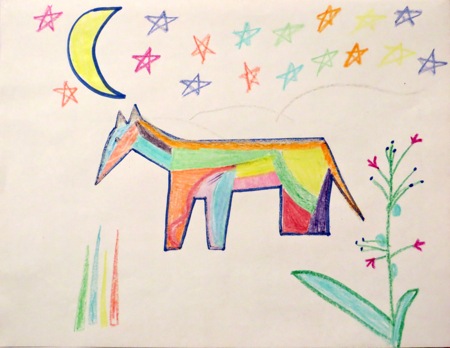“Transgracial” — that’s not a typographical error. Rebecca Tuvel, professor of philosophy at Rhodes College in Memphis, explores the implications of a “transgracial,” or combined transgender and transracial identity, in a post to the American Philosophy Association (APA) “Black Issues in Philosophy” blog. In this post, Tuvel argues that transracial identity is analogous to transgender identity, where “analogous to” doesn’t mean “identical to.” When she first published these ideas in 2017, apparently some people were outraged. But I think Tuvel’s proposed analogy is less interesting than an essay she refers to written by Ronnie Gladden, who presents as a black man but who identifies as a white woman.
This essay, published in 2015 in Queer Cats Journal of LGBTQ Studies is titled “TRANSgressive Talk: An Introduction to the Meaning of Transgracial Identity.” The author, at that time a doctoral student in education at Northern Kentucky University, identifies their names as both Ronnie Gladden and Rachael Greenberg, so I’ll refer to them as Gladden/Greenberg. (For reference, it appears in 2021 that they identify simply as Ronnie Gladden.) In 2015, Gladden/Greenberg began their essay by saying:
“My confrontation with my internalized racial unrest, along with a growing awareness of my authentic gender identity, has been prompted, in part, by two socio-political shifts: 1) the escalating tensions belying the ‘Black Lives Matter’ movement, and 2) the increased visibility of transgender individuals in a myriad of public spaces. Increasingly, I feel an urgency to be forthcoming about my true identity in an era where transparency is not just encouraged; it is demanded. In spite of presenting as outwardly black and male — by and large I view myself as white and female….”
Gladden/Greenberg writes about an intersectional identity that I hadn’t thought about before. They describe tensions in their life that I wouldn’t have thought about. At the same time, claiming a transracial identity in the U.S. today may not seem possible, given the way we understand race in our society. But a 2014 article in Georgetown Law Journal by Camille Gear Rich, Gould School of Law at USC, titled “Elective Race: Recognizing Race Discrimination in the Era of Racial Self-Identification”, referred to in Tuvel’s blog post, may help to think further about the question of transracial identities. In this article, Rich writes:
“[W]e are in a key moment of discursive and ideological transition, an era in which the model of elective race is ascending, poised to become one of the dominant frameworks for understanding race in the United States. Because we are in a period of transition, many Americans still are wedded to fairly traditional attitudes about race. For these Americans, race is still an objective, easily ascertainable fact determined by the process of involuntary racial ascription — how one’s physical traits are racially categorized by third parties. The elective-race framework will challenge these Americans to recognize other ways in which people experience race, including acts of voluntary affiliation as well as selective and conditional affiliations.”
Rich acknowledges that this new elective model of race poses distinct challenges: “The elective-race framework rejects claims about the obdurate, all-encompassing nature of white privilege and the need for racial passing” (p. 1506). Rich isn’t denying that white privilege is real, but at the same time different individuals may navigate white privilege in different ways. Rich also points out that “neither lay understandings nor institutional understandings of elective race are fully developed”; I’m finding Rich’s article to be an excellent resource as I develop my own understanding of elective race.
Given that a significant number of people — let’s say, a growing number of people — accept the evolving concept of elective race, it should be no surprise to find people who identify as living at the intersection of transracial and transgender identities. I imagine that will be a difficult intersection at which to live. I wonder how Unitarian Universalism (and other religions, for that matter) will respond to the persons living at that intersection.


